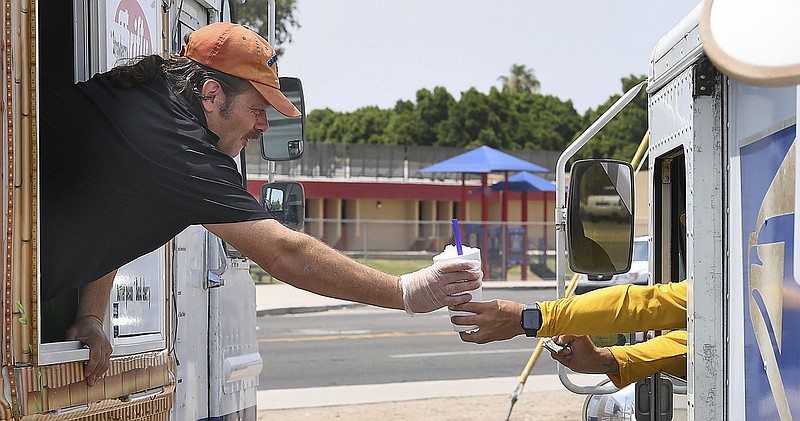One of the most extreme heat waves ever observed in the western United States this early in the season is near its climax. The punishing blast of heat, which began Sunday, has set hundreds of records while simultaneously worsening a historically severe drought, intensifying fires and degrading air quality.
About 40 million Americans have endured triple-digit heat, and more than 50 million have been under excessive-heat warnings this week.
After focusing in the northern and central Rockies earlier in the week, the core of the heat has shifted into the Desert Southwest and California's Central Valley, where scores of additional records are predicted to fall through Saturday.
While it's just mid-June and the hottest time of the year is historically still weeks away, temperatures have matched their highest ever observed levels in parts of Utah, Wyoming and Montana. Salt Lake City; Casper, Wyo.; and Billings, Mont., all made history Tuesday, soaring to 107, 101 and 108 degrees, respectively.
On Wednesday, thermometers in Las Vegas rose to 116, just one degree shy of its highest temperature ever recorded. Death Valley, Calif., famous for holding the world record for heat, hit 125 degrees, the highest temperature reached this year in the U.S. Denver hit the century mark for a second-straight day Wednesday, the earliest in the season it has reached 100 twice in a row.
"What we are seeing in the Western U.S. this week -- I'd be comfortable calling it a mega-heat wave because it is breaking 100-plus-year records, and it is affecting a wide region," said Mojtaba Sadegh, a professor at Boise State University who specializes in climate extremes.
The "mega-heat wave" is being supercharged by climate change, scientists say. "Currently, climate change has caused rare heat waves to be 3 to 5 degrees warmer over most of the United States," Michael Wehner, a climate scientist at Lawrence Livermore National Laboratory, wrote in an analysis published Tuesday.
Excessive heat warnings Thursday blanketed much of California outside coastal and mountainous areas, southern Nevada, western and southern Arizona, and southern Utah. In many of those areas high temperatures are forecast to exceed 100 and even 120 degrees in desert areas of southern California.
Meanwhile, the hot, dry conditions have created tinderbox conditions for fire ignitions and blazes have started in several states. The fire risk Thursday was particularly worrisome because of the prediction for dry lightning -- a major ignition source -- in parts of the West.
Already parched vegetation is going to be even more flammable during and after this heat wave.
Since Sunday, wildfires have started in California, Arizona, Utah, Wyoming and Montana, and conditions are ripe for more. Red flag warnings for high fire danger continue in effect for Utah, Wyoming and Montana.
On Thursday, the National Weather Service's Storm Prediction Center was predicting the possibility of dry lightning over a broad region of the West, which could spur fast-moving blazes. And this will become an even greater concern deeper into fire season when winds increase.
"My expectation is that we are going to have a dramatic fire season this year," Sadegh said.
In vulnerable parts of California, the ground is as dry and vegetation flammable as it was last year ahead of its worst wildfire season on record.
In a study published in September, Sadegh and his colleagues show that extreme heat and extreme dryness are overlapping with increasing frequency, and that rare, high-end events have seen an "alarming" jump since 1993. For example, dry-hot extremes that should happen only once every 75 years occurred three or four times in the past 25 years in some regions.
As droughts worsen heat waves and heat waves worsen droughts, Sadegh doesn't expect this cycle of warming and drying to break until there is a significant shift in weather patterns. "We're still in June, so expect a lot more heat waves coming this summer," he said.
